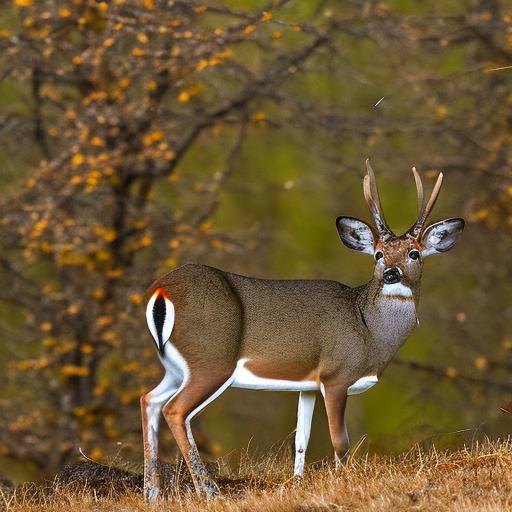Your cart is currently empty!

cull deer hunts

Cull deer hunts are a method of managing deer populations that involves selectively removing a certain number of deer from a specific area. This practice is necessary to maintain a healthy deer population and prevent overpopulation, which can have negative impacts on the ecosystem and other wildlife species. Understanding the purpose and benefits of cull deer hunts is crucial in order to support effective wildlife management strategies.
Key Takeaways
- Cull deer hunts are conducted to manage deer populations and prevent overgrazing.
- Benefits of cull deer hunts include reducing deer-vehicle collisions and protecting natural habitats.
- Professional hunters play a crucial role in cull deer hunts by ensuring humane and ethical practices.
- The ethics of cull deer hunts are controversial, with some arguing against killing animals for sport.
- Hunters should prepare by selecting the right weapon, understanding the best time and location, and following safety tips.
Understanding the Purpose of Cull Deer Hunts
Cull deer hunts are necessary to control deer populations and prevent overpopulation. When deer populations become too large, they can cause damage to their habitat by overgrazing on vegetation, which can lead to a decline in biodiversity. Additionally, an overabundance of deer can result in increased competition for resources, such as food and shelter, which can negatively impact other wildlife species.
Maintaining a healthy deer population is important for the overall health of the ecosystem. Deer play a vital role in seed dispersal and maintaining plant diversity. They also serve as a food source for predators, such as wolves and coyotes. By managing deer populations through cull hunts, wildlife managers can ensure that the ecosystem remains balanced and healthy.
The Benefits of Cull Deer Hunts for Wildlife Management
Cull deer hunts are an effective method of managing wildlife populations. By selectively removing a certain number of deer from an area, wildlife managers can control population growth and prevent overpopulation. This helps to maintain a healthy balance within the ecosystem and ensures that resources are not depleted.
In addition to controlling population growth, cull deer hunts also have benefits for other wildlife species. When deer populations are kept at a manageable level, there is less competition for resources, such as food and shelter. This allows other species to thrive and maintain their own populations.
Furthermore, cull deer hunts can help reduce the spread of diseases among deer populations. Overcrowding can increase the likelihood of disease transmission, which can have devastating effects on deer populations. By managing deer populations through cull hunts, wildlife managers can help prevent the spread of diseases and maintain the overall health of the population.
The Role of Professional Hunters in Cull Deer Hunts
Professional hunters play a crucial role in cull deer hunts. They are responsible for ensuring the safety and ethical hunting practices during the hunt. Professional hunters have the knowledge and experience to effectively and humanely remove the targeted number of deer from the area.
Safety is a top priority during cull deer hunts, and professional hunters are trained to follow strict safety guidelines. They are knowledgeable about firearm safety, hunting regulations, and proper hunting techniques. This ensures that the hunt is conducted in a safe and responsible manner.
Ethical hunting practices are also important during cull deer hunts. Professional hunters are trained to make ethical shots that result in a quick and humane kill. They understand the importance of minimizing suffering and ensuring that the animal is harvested in a respectful manner.
The Ethics of Cull Deer Hunts: A Matter of Controversy
Cull deer hunts are not without controversy. Some people argue that it is unethical to kill animals for population control purposes, while others believe that it is necessary for maintaining a healthy ecosystem. The controversy surrounding cull deer hunts stems from differing opinions on animal rights, conservation, and hunting ethics.
Those who support cull deer hunts argue that it is a necessary tool for wildlife management. They believe that by controlling deer populations, we can prevent overpopulation and its negative impacts on the ecosystem. They also argue that cull hunts can be conducted in a humane and ethical manner, with professional hunters ensuring that animals are harvested quickly and humanely.
On the other hand, opponents of cull deer hunts argue that killing animals for population control purposes is inherently unethical. They believe that animals have a right to live and should not be killed for human convenience. They also argue that there are alternative methods of wildlife management that do not involve killing, such as contraception or relocation.
Preparing for a Cull Deer Hunt: What You Need to Know
If you are planning to participate in a cull deer hunt, there are several things you need to know and consider. First and foremost, it is important to familiarize yourself with the hunting regulations and requirements in your area. This includes obtaining the necessary permits and licenses, as well as understanding any restrictions or limitations on the hunt.
In addition to the legal requirements, it is also important to be physically prepared for the hunt. Cull deer hunts can be physically demanding, requiring long hours of walking or hiking in rugged terrain. It is important to be in good physical condition and have the necessary stamina to endure the hunt.
Furthermore, it is essential to have the right equipment and gear for a successful hunt. This includes a reliable firearm or bow, appropriate ammunition or arrows, camouflage clothing, and other hunting accessories. It is important to invest in high-quality equipment that is suitable for the specific conditions of the hunt.
The Best Time and Location for Cull Deer Hunts
The best time and location for cull deer hunts can vary depending on several factors. The timing of the hunt is typically determined by the specific goals of the wildlife management program and the local deer population dynamics. In general, cull deer hunts are often conducted during the fall or winter months when deer populations are more concentrated and visible.
When selecting a hunting location, it is important to consider factors such as deer density, habitat quality, and accessibility. Areas with high deer densities are often targeted for cull hunts in order to effectively control population growth. Additionally, areas with diverse habitats that provide ample food and cover for deer are also ideal locations for cull hunts.
It is also important to consider accessibility when selecting a hunting location. Areas that are easily accessible by roads or trails make it easier to transport harvested deer and minimize the impact on the surrounding environment. However, it is also important to consider the potential for hunting pressure in easily accessible areas, as this can affect the success of the hunt.
The Importance of Selecting the Right Weapon for Cull Deer Hunts
Selecting the right weapon for cull deer hunts is crucial for a successful and ethical hunt. The choice of weapon depends on several factors, including personal preference, hunting regulations, and the specific conditions of the hunt.
For firearms, popular choices for cull deer hunts include rifles chambered in calibers such as .243 Winchester or .270 Winchester. These calibers are suitable for taking down deer at moderate distances and are commonly used by hunters for deer hunting.
For archery hunters, compound bows or crossbows are commonly used for cull deer hunts. These weapons require a higher level of skill and practice compared to firearms, but they offer a more challenging and rewarding hunting experience.
It is important to select a weapon that you are comfortable and proficient with. This includes practicing with the weapon prior to the hunt to ensure accuracy and familiarity. Additionally, it is important to follow all hunting regulations regarding weapon selection and ammunition requirements.
The Dos and Don’ts of Cull Deer Hunts: Safety Tips for Hunters
Safety is paramount during cull deer hunts, and it is important for hunters to follow certain guidelines to prevent accidents and injuries. Here are some dos and don’ts of cull deer hunts:
– Do familiarize yourself with hunting regulations and requirements in your area.
– Do obtain the necessary permits and licenses before participating in a cull deer hunt.
– Do practice safe firearm handling and follow all firearm safety rules.
– Do wear appropriate safety gear, such as blaze orange clothing, to increase visibility to other hunters.
– Do communicate with other hunters in your group to ensure everyone is aware of each other’s locations.
– Don’t shoot at unidentified targets or beyond your effective shooting range.
– Don’t climb or descend from tree stands without using a safety harness.
– Don’t consume alcohol or drugs before or during the hunt.
– Don’t trespass on private property without permission.
Following these safety guidelines can help ensure a safe and enjoyable cull deer hunt for all participants.
The Impact of Cull Deer Hunts on Local Communities and Economies
Cull deer hunts can have a positive impact on local communities and economies. These hunts often attract hunters from outside the area, which can boost tourism and bring in additional revenue for local businesses. Hunters may stay in local hotels, eat at local restaurants, and purchase supplies from local stores, which helps support the local economy.
Furthermore, cull deer hunts can help reduce the negative impacts of deer overpopulation on local communities. Overabundant deer populations can cause damage to crops, gardens, and landscaping, resulting in financial losses for farmers and homeowners. By managing deer populations through cull hunts, wildlife managers can help mitigate these damages and reduce conflicts between humans and deer.
Alternatives to Cull Deer Hunts: Exploring Other Wildlife Management Strategies
While cull deer hunts are an effective method of managing deer populations, there are alternative wildlife management strategies that can be used in certain situations. These alternatives include contraception, relocation, and habitat modification.
Contraception involves administering birth control to female deer to prevent them from reproducing. This method is often used in urban areas where culling is not feasible or socially acceptable. However, contraception is not a practical solution for large-scale population control due to the logistical challenges and costs associated with administering contraceptives to a large number of deer.
Relocation involves capturing and relocating deer to areas with lower population densities. This method is often used when there is a need to reduce deer populations in a specific area without resorting to culling. However, relocation can be stressful for deer and may not be a viable option in all situations.
Habitat modification involves altering the landscape to make it less attractive to deer. This can include planting deer-resistant vegetation, installing fencing, or implementing other deterrents. While habitat modification can help reduce damage caused by deer, it is not a standalone solution for population control and is often used in conjunction with cull hunts.
Cull deer hunts are a necessary tool for managing deer populations and maintaining a healthy ecosystem. By selectively removing a certain number of deer from an area, wildlife managers can prevent overpopulation and its negative impacts on the environment. Professional hunters play a crucial role in ensuring the safety and ethical practices during cull deer hunts.
While cull deer hunts are not without controversy, they are supported by many wildlife managers and hunters as an effective method of wildlife management. It is important to approach cull deer hunts with a commitment to ethical and responsible hunting practices, and to follow all safety guidelines to prevent accidents and injuries.
In conclusion, cull deer hunts are an important aspect of wildlife management that help maintain a healthy balance within the ecosystem. By understanding the purpose and benefits of cull deer hunts, we can support effective wildlife management strategies and ensure the long-term health of our natural resources.
If you’re interested in cull deer hunts, you might also find this article on “How to Hunt Pheasant Without a Dog” intriguing. It provides valuable insights and tips for those who prefer to hunt pheasants without the assistance of a canine companion. Check it out for some useful techniques and strategies.
FAQs
What is a cull deer hunt?
A cull deer hunt is a type of hunting where a specific number of deer are targeted and killed in order to manage the population of deer in a particular area.
Why are cull deer hunts necessary?
Cull deer hunts are necessary to manage the population of deer in a particular area. If the deer population is not managed, it can lead to overgrazing, damage to crops, and an increase in deer-vehicle collisions.
Who conducts cull deer hunts?
Cull deer hunts are typically conducted by government agencies, such as state wildlife departments, or by private landowners.
What is the process for a cull deer hunt?
The process for a cull deer hunt varies depending on the location and the agency or landowner conducting the hunt. Generally, hunters are selected through a lottery system and are given specific instructions on where and when to hunt. The hunters are typically required to follow specific rules and regulations, such as using specific types of weapons or hunting during specific times of the day.
What happens to the deer that are killed during a cull deer hunt?
The deer that are killed during a cull deer hunt are typically processed for meat and donated to local food banks or other charitable organizations.
Are cull deer hunts controversial?
Yes, cull deer hunts can be controversial. Some people believe that killing deer is cruel and unnecessary, while others believe that cull deer hunts are necessary for managing the deer population and preventing damage to crops and property.

Herb has been a longtime lover of the outdoors. Whether it be hunting, camping, fishing or just getting outside to reset. Proud father and animal lover. Bourbon anyone?

by
Tags:
Comments

Categories
- Big Game Hunting (301)
- Deer (202)
- Reviews (3)
- Shooting (16)
- Slingshot (1)
- Small Game Hunting (42)
- Upland Hunting (126)
- Waterfowl Hunting (3)





Leave a Reply